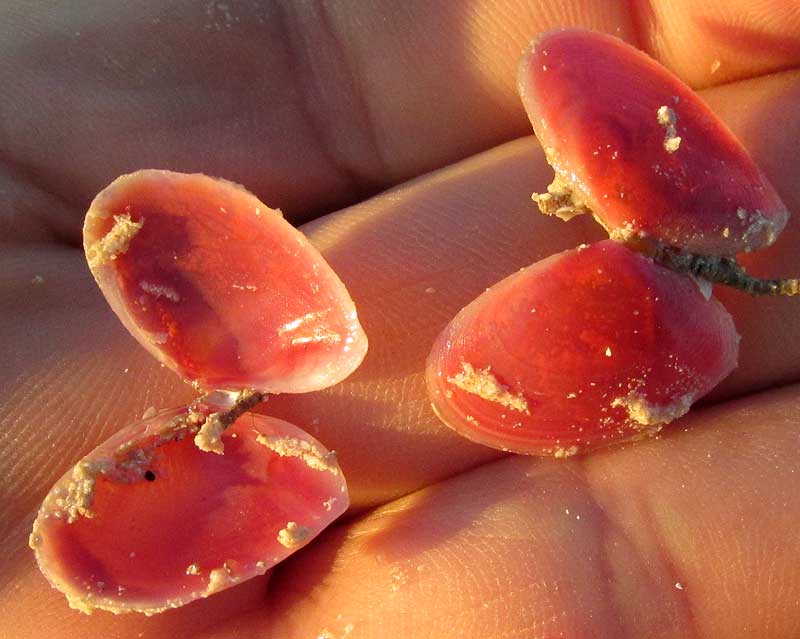Excerpts from Jim Conrad's
Naturalist Newsletter

from the March 1, 2015 Newsletter issued from Río Lagartos, on the Yucatan Peninsula's northern coast (~N21.60°, ~W88.16°), Yucatán state, MÉXICO
ROSE-PETAL TELLIN
Above, you can see a small but eye-catching and fairly commonly encountered, clam-like seashell found on the northern Yucatan's beaches.
Volunteer identifier Bea in Ontario with her new Peterson field guide to seashells offered as her best bet for an identification the name TELLINA LINEATA, often known as the Rose-petal Tellin. That field guide doesn't include everything, though, and doesn't focus on our part of the world, so to confirm the ID I checked out the 2007, well illustrated book by Antonio García-Cubas and Martha Reguero Catalogo ilustrado de moluscos del Golfo de Mexico y Mar Caribe, partly accessible on the Internet via Google Books. Using that, I also settled on Tellina lineata as the most likely name. The bivalve's main field marks are the shells' small size, their general shape, their smoothness and shininess, the many very fine concentric rings on the shells' tops, their rosy color, and the flexible, hinged ligament that normally connects the top and bottom shells freshly washed onto the beach.
Rose-petal Tellins occur throughout the Gulf of Mexico and Caribbean to South America, south to Brazil. Being so extensively distributed, many pictures of them can be found on the Internet, but none are as intensely brightly red as ours. In the literature they are described as white to rose tinted, but our shells go far beyond being rose tinted. Maybe we have a race or subspecies or even a species here not yet documented in literature on the Internet.
Susan Rothschild in her 2004 book Beachcomber's Guide to Gulf Coast Marine Life: Texas, Louisiana, Mississippi, Alabama and Florida, writes that our Rose-petal Tellin, unlike clams, which are filter-feeders, are rather "deposit-feeders." Deposit-feeders are equipped with very long, unfused siphons which act as vacuum cleaners when swept over sediment, gathering edible detritus and algae. Detritus is dead organic material, normally from decomposing organisms.